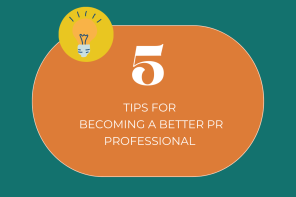
Monday March 24, 2025
Why Workplace Initiatives Fail
We’ve all seen the headlines:
“No-Meeting Wednesdays!,
“Zoom-Free Fridays!
“Return to Office—but Only If You Want To!”
They sound great. Until they don’t.
In PR—whether you’re in-house or on the agency side—these workplace trends often crash hard against the reality of live client calls, last-minute pitches, and round-the-clock media monitoring.
So why do they keep failing us?
Trendy Doesn’t Equal Useful
Let’s start with the “No-Meeting Day” experiment.
It’s meant to give you uninterrupted time to focus. But in practice? It just pushes all the meetings to Tuesday and Thursday. Suddenly those days feel like a never-ending back-to-back sprint.
You’re not less stressed. You’re just stressed on a tighter schedule.
This isn’t unique to PR—but the fallout hits us harder. The media doesn’t wait. Clients don’t pause. Crises don’t book calendar slots.
Wellness Fatigue is Real
Meditation apps, mental health webinars, Friday yoga sessions. Sounds supportive, right?
But not if you’re juggling a demanding pitch, managing three accounts, and replying to emails at 10pm. Telling teams to “breathe deeply” while their deadlines spiral is tone-deaf at best, and insulting at worst.
Real wellness starts with removing the stressors—not just layering over them with “mindfulness minutes.”
Hybrid Work: The New Confusion
Flexibility is the holy grail. But in many PR teams, hybrid work has become a logistical minefield.
You’re told you can work from anywhere… until a big client wants a face-to-face brainstorm. Or leadership decides “culture” needs more in-person bonding. Or half your team is remote while the other half’s in a conference room.
That leads to a quiet hierarchy—those in-office get more facetime (and facetime often means favour). The result? Confusion, inconsistency, and friction.
Why These PR Trends Fall Flat
- They’re reactive, not strategic.
Trends are often adopted because everyone else is doing them. That’s not a strategy—that’s panic with a press release. - They ignore how PR really works.
PR isn’t a 9-to-5. It’s fast-paced, unpredictable, and client-led. If a policy doesn’t respect that rhythm, it won’t last. - They try to treat symptoms, not causes.
Don’t create a wellness app to fix burnout—look at what’s burning people out. Is it poor resourcing? Unrealistic turnarounds? Lack of autonomy?
What Actually Works in PR Teams
Here’s what to focus on instead:
- Ask people what they need.
Not in a survey. In conversation. Real talk reveals more than checkboxes. - Fix the bottlenecks.
Is client feedback always late? Is there too much red tape? Are junior staff stretched too thin? Trends won’t solve that—but operational changes will. - Commit to consistency.
Whatever policies you introduce—stick to them. If people don’t trust the policy will hold up under pressure, they won’t use it. - Design for your culture, not someone else’s.
Your team isn’t Google. Stop copying their playbook. Build one that reflects how you actually work.
Workplace trends can help—but only if they’re rooted in real needs, not buzzwords.
In PR, the pressure is constant. That’s not changing. What can change is how honestly we address it.
Don’t chase trends. Fix problems. That’s what your team—and your clients—actually need.
Curzon PR is a London-based PR firm working with clients globally. If you have any questions, please feel free to contact our Business Development Team bd@curzonpr.com







Follow us